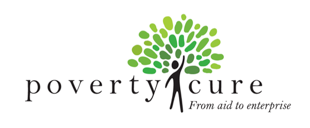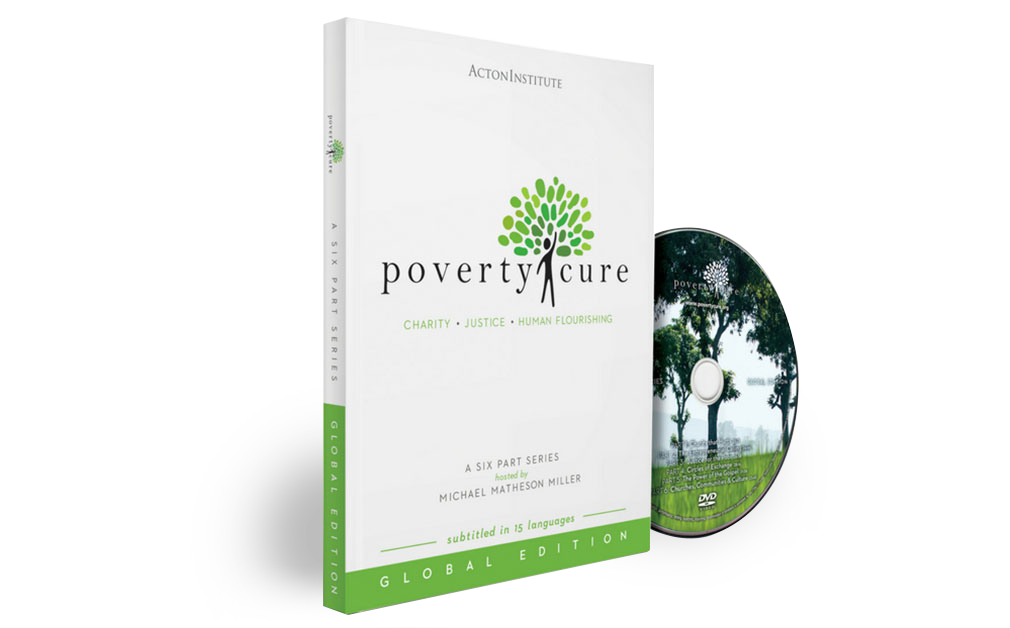The Savings Group
There can be significant variation in savings group models, but for the sake of establishing a basic definition, a savings group is a voluntarily organized group of 30 or less people, often from poor and rural communities, that routinely combine their savings and then lend out the accumulated savings to each other to pay for household expenses or for business investment. The amount of money each group member contributes can be as little as 10 or 25 cents a week but with discipline and gains through loan interest, the group’s savings can turn into thousands of dollars, a substantial amount especially by low-income country standards. This arrangement helps meet group members’ economic needs, maintains or starts small businesses, and benefits whole communities through increased economic activity.
While no outside capital is used in savings groups, it is common for nonprofit organizations to provide the training villagers or church members need to create and lead savings groups. These same organizations then step out of the process, making them sustainable, self-directed groups. Hundreds of thousands of savings groups have been started by many different organizations around the world. HOPE International and Plant with Purpose, both PovertyCure Partners, are two such organizations.
History, Basic Model, and Variations
It was in 1991 that the savings group first arose in a significant way, being driven to prominence as a model by CARE, a humanitarian nonprofit. CARE termed their particular savings group model as a Village Savings and Loan Association (VSLA). In the year since, these associations have been spread by CARE to communities ranging from remote villages to urban slums in 51 countries.
-
The VSLA model is straightforward:
1. Community is oriented to the VSLA concept.
2. Individuals opt to join a group and identify their own members (typically 15-25 members).
3. Members are trained on group governance and management. They get a lockbox with three locks and three keys, and passbooks for recording transactions.
4. Group establishes a constitution and bylaws, including meeting frequency, rules and regulations.
5. Group elects a chairperson, secretary, and treasurer for a one-year term.
6. Group sets the price per share and the minimum/maximum number of shares a member can purchase during a meeting. These “shares” are the units of savings which group members contribute each week. They can range from as little as 10 cents to $1 or more.
7. Groups begin saving on a weekly basis and are trained on financial management.
8. Groups add lending to the routine, making loans to members and collecting repayments with interest (a 10 percent monthly rate is typically applied to loans).
9. After 9-12 months, groups host “Share-Out Day,” ending the cycle and distributing savings and profits to members according to the number of shares each has purchased during the cycle.
10. Most groups quickly initiate a new cycle autonomously.
Almost all of the savings groups in existence today are based on this original VSLA model disseminated by CARE. In their study of the different models used by the organizations most engaged in the savings groups movement, the SEEP Network found that all of the models held many principles in common, all of which are clearly inspired by VSLAs.
Still, many variations exist in how individual savings groups are run. This flexibility reflects the preferences and needs of the group members, as well as the goals of the organizations that helped start them. Christian-based organizations such as HOPE International, for example, have purposefully sought to incorporate worship, prayer, Bible study, and discipleship as integral parts of their savings group model.
Another important variation exists. As referenced at the outset of this article, most organizations engaged in savings groups maintain a principle of zero capital injection, but a select few do in fact provide outside capital. PovertyCure Partners like HOPE International and Plant with Purpose maintain the principle of zero capital injection, and for good reason: The funds saved by the group are completely their own funds. These organizations believe that this approach helps saving group participants develop a sense of ownership and pride, whereas a capital injection model has the high probability of stealing dignity and promoting a dependency mindset. This characteristic of zero capital injection makes savings groups one of the most sustainable, dignity-affirming models in the sphere of community development.
The Economic Benefits
Evidence suggests that savings groups provide a number of modest economic benefits to their members. The SEEP Network, “a collaborative learning network” meant to “enhance the livelihood of the world’s poor,” reviewed 53 studies on savings groups and summarized their findings.
Firstly, savings provide people living in rural or far-flung areas of developing countries their first real connection to financial services. Traditional banking, and even microfinance, are simply not available in these areas. According to SEEP, an average of only 28 percent of adults in low-income countries have an account with a financial institution. Savings groups help remedy this problem of financial exclusion and “provide members a secure place to save, the opportunity to borrow in small amounts and on flexible terms, and affordable basic insurance services.”
Savings group membership also leads to increased savings and credit access. The majority of the aforementioned studies show “there is a large amount of evidence on the positive impact of [savings groups] on member savings and access to credit.” Hope International has found that the funds deposited with the savings groups are members’ primary source of emergency funds, which they didn’t have previously. People engaged in their programs have built up an average savings of $40.44, no small amount in a low-income country. Similarly, those engaged in savings groups through Plant with Purpose are twice as likely to have six months’ worth of emergency funds as those who don’t participate in the savings groups.
Do saving groups members see an increase in assets beyond what was mentioned above? According to the studies, “a fair amount of evidence exists supporting that [savings group] participation leads to an increase in asset ownership.” 13,000 of Hope International’s saving group members in Rwanda were certainly able to increase their assets. At the end of their savings group cycle, members used their increased savings to purchase thousands of cows, goats, rabbits, chickens, and made hundreds of home improvements. While not assets in the traditional sense, hundreds of school fees were also able to be made through the growth of these same group members’ savings.
The biggest question is whether savings groups help people escape from material poverty. The studies reviewed by the SEEP Network led them to conclude that “there is only a small amount of evidence that [savings group] participation leads to an increase in income or changes in poverty levels.” The majority of the studies simply did find any discernable impact on people’s overall, material situation. One study done by HOPE International found that poverty levels as measured by the multidimensional poverty index (MPI) among their group members in Rwanda fell by 7 percent between 2015 and 2016. Considering that other environmental factors may have played a part in this modest reduction of poverty, it can be said with confidence that while savings groups certainly do have a positive economic impact on their members, the savings group model is by no means a panacea.
The Social Benefits
It would be a mistake to focus exclusively on the economic results of savings groups. Evidence shows that members benefit socially as well; savings groups help develop social bonds and foster closer relationships. Of the 53 studies reviewed by the SEEP Network, one third of them studied the social impact of the groups, all of which reported positive findings. SEEP mentions that one of the studies
observed a strengthened social bond among members over time, gained through collective problem solving, sharing advice, learning how to get along better with different personalities, being respectful, listening to others, and feeling heard…. Many others studies describe group solidarity in a similar way, demonstrating how group members assist one another with daily activities and provide support to members in times of need.
Hope International surveyed their group members in Malawi in order to discover the level of trust that existed within the groups themselves. 70 percent responded with a 5 out 5 rating, saying that they would trust fellow members “very much” to help them and their family in a time of need.
There is also plenty of anecdotal evidence that shows how savings groups produce closer bonds between people within the groups. A woman from Burundi named Jeanine was a member of a Hope International savings group. When Jeanine lost her husband in 2014, her savings group covered the cost of his burial. She stated that, “I came to realize without the SG members I couldn’t even live. It’s like I fell down and they came to pick me up. I thank God for my group, and that I have people around me that I can count on.”
The creation and strengthening of social bonds within groups is certainly a major strength of savings groups that must not be overlooked. As social beings, we are wired for community and relationship. Savings groups help provide those relationships and serve to get their members through adverse times.
The Spiritual Benefits
While a savings group can obviously operate in secular manner, the work of HOPE International and other Christian-based organizations shows that there are real spiritual benefits of savings groups as well. This is especially true when the organizations work primarily through local churches, as Hope International does.
An examination of the agenda of a typical Hope International savings group session provides a window into what spiritual benefits may arise. When HOPE’s savings groups meet, they follow a very simple meeting structure called the 5W’s:
• Welcome – Members greet one another, not simply as members of a small financial services group, but as brothers and sisters in Christ.
• Worship – Members gather to sing praises to God and enter into prayer for one another.
• Word – Members join together to study the Scriptures, seeking to be sanctified by the words of the Almighty.
• Work – Members collect and record their savings and manage the loans they have provided or are considering to provide.
• Wrap-up – Members conclude their fellowship together by sharing reminders to keep one another accountable, encourage each other as they depart, and finish with a closing prayer.
When structured in this way, savings groups become a powerful vehicle for Christian discipleship. The resulting spiritual growth in the lives of group members is another wonderful benefit of the savings group model.
Summary
Savings groups are an important model that have allowed people who are impoverished and disconnected from financial services to begin building up their savings and increase their asset holdings as they wage an arduous war against generational poverty. They are bringing communities together – economically, socially, and spiritually – and should be championed for their successes. With no outside capital provided, the savings group model powerfully demonstrates the agency and creative capacity of those living in material poverty.
Their economic impact, however, should not be overstated. Savings groups will not pull millions of people out of poverty. Only broad reforms and the true establishment of the foundations of human flourishing can do this. Rule of Law, property rights, political and economic freedom, and trade are what enable people to create wealth for themselves, their families, and their communities.
Savings groups are a good first step, but they certainly are not the last.


